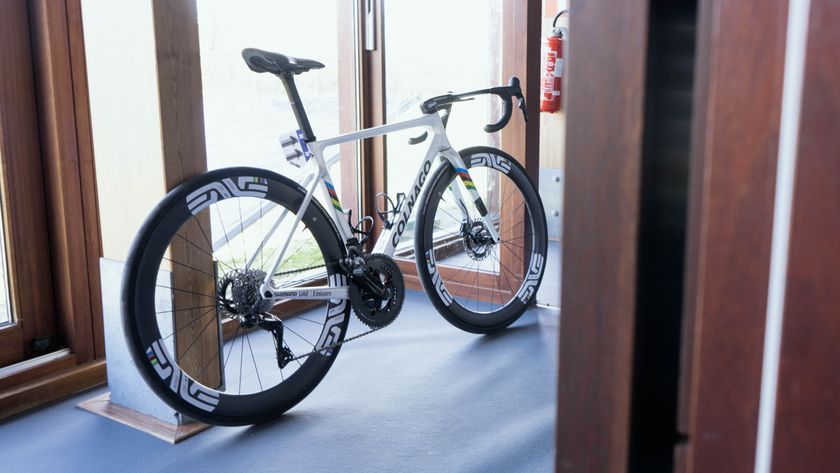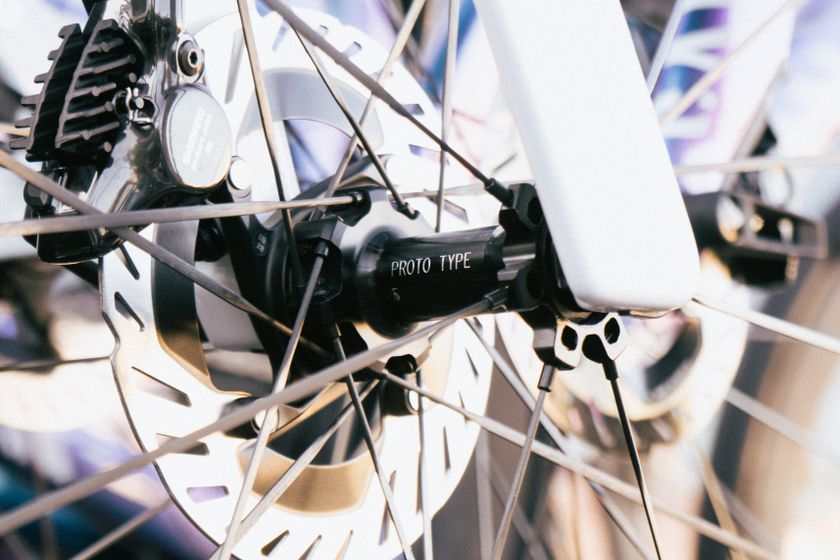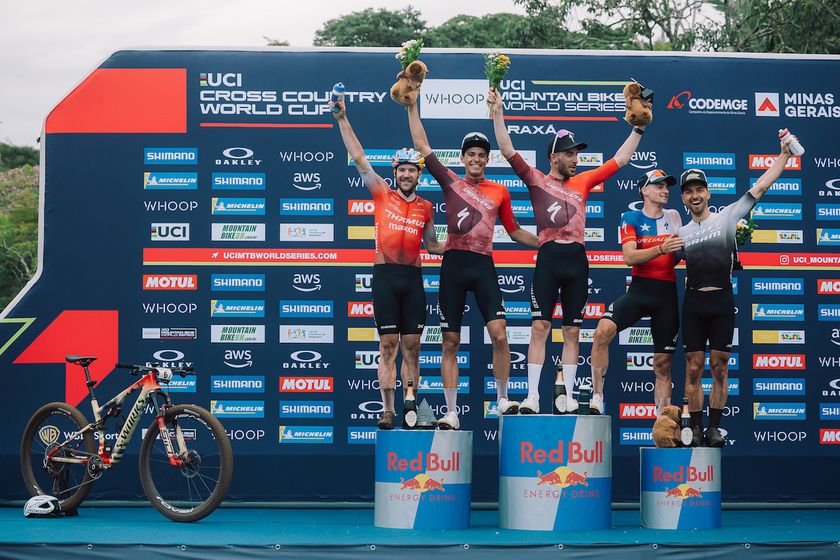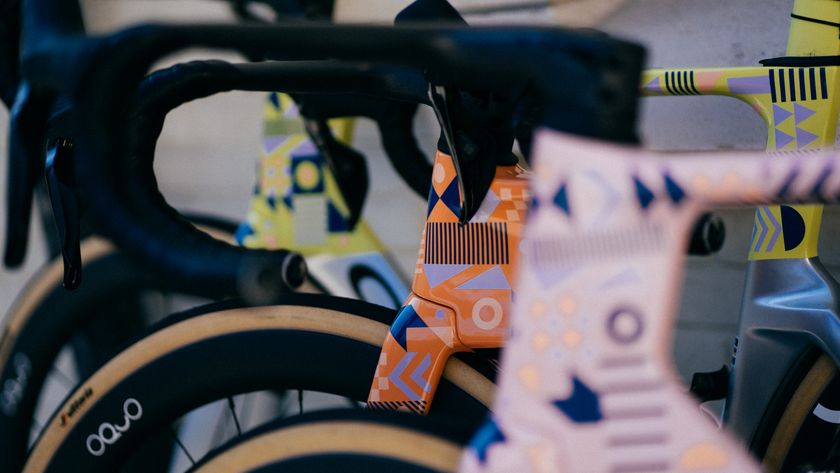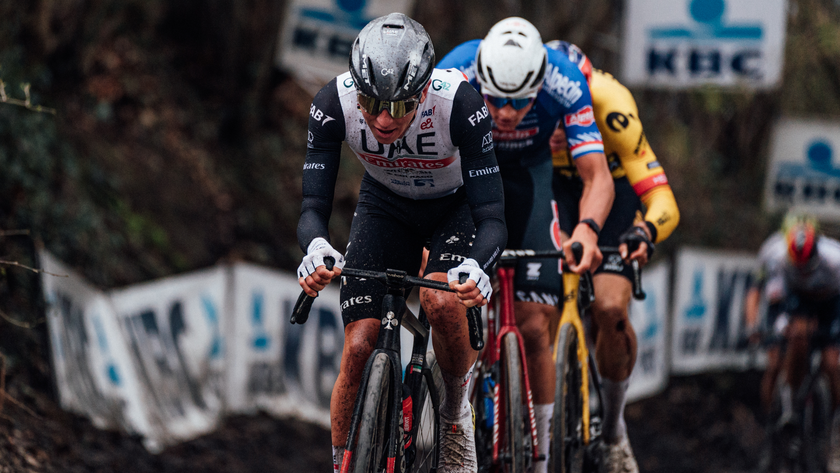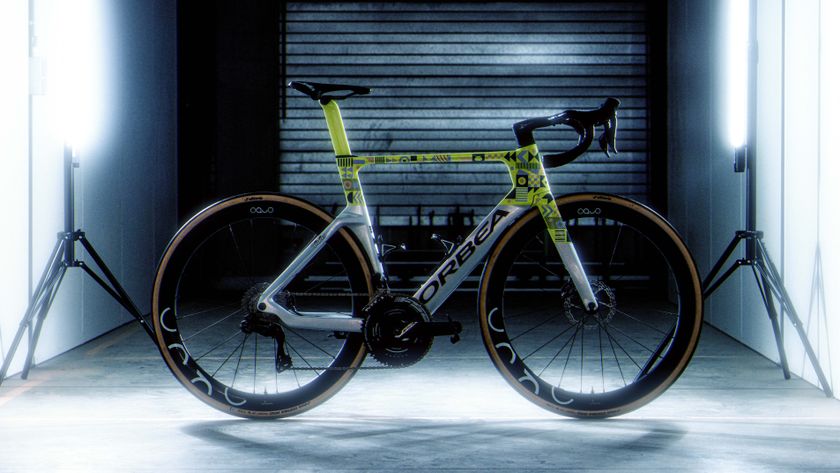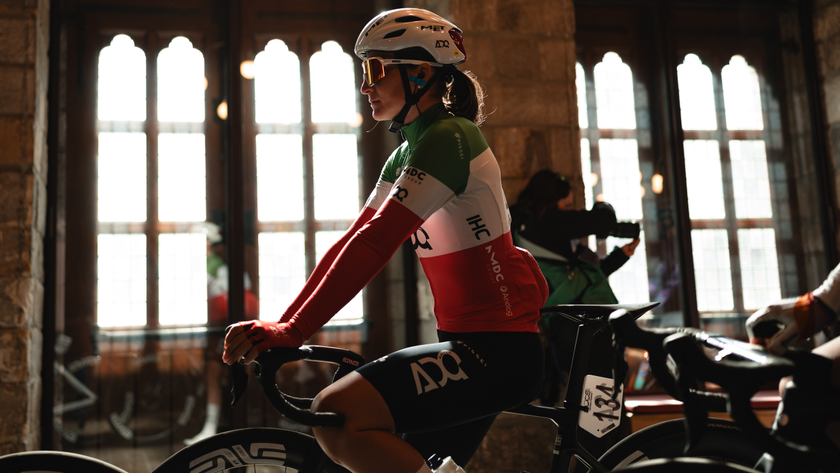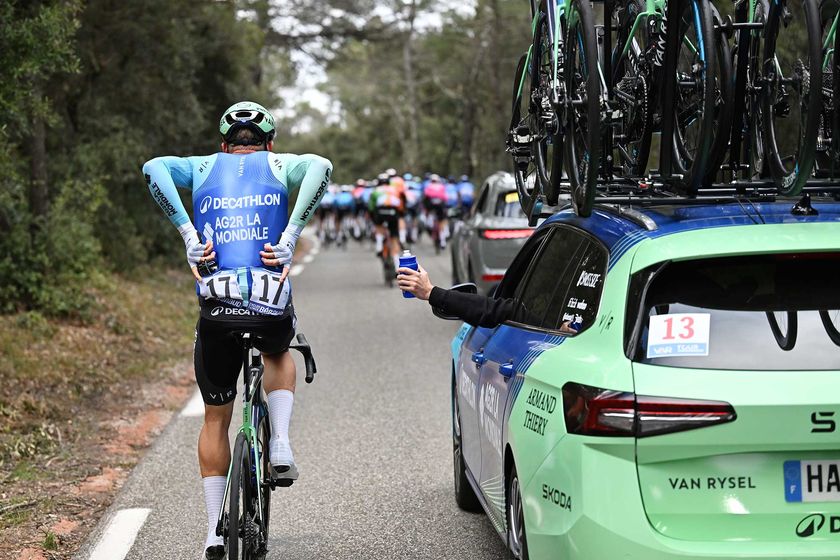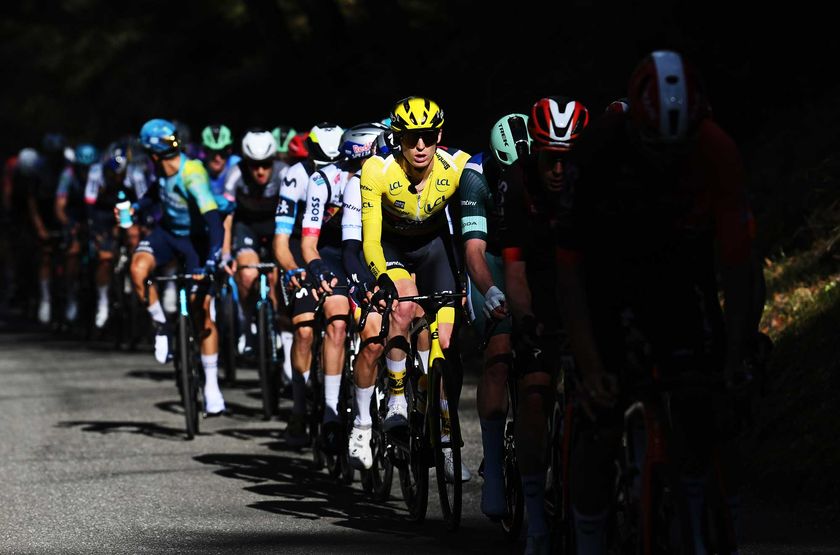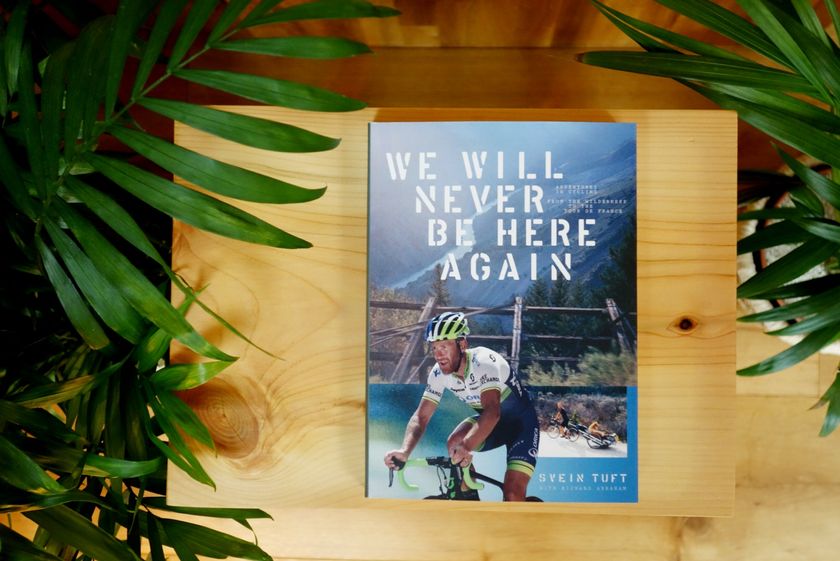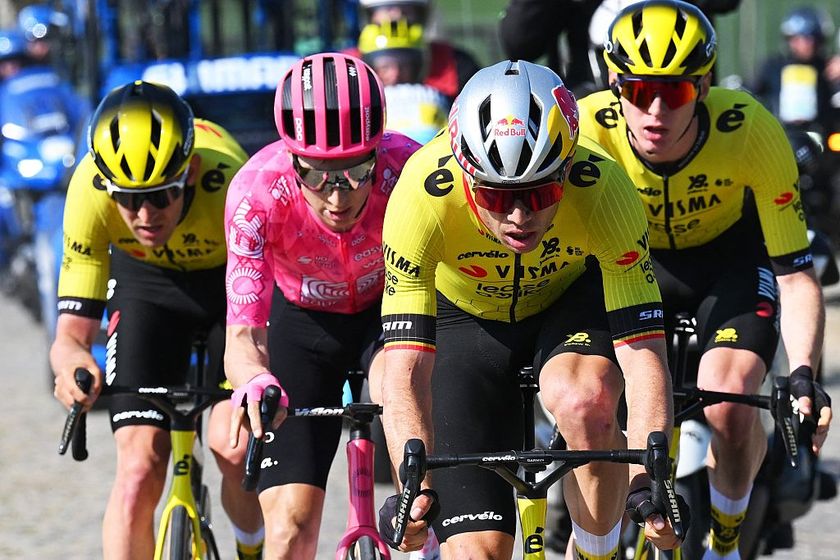Cyclingnews Fitness Q&A - September 28, 2011
Training and maintaing condition with Chronic Fatigue Syndrome
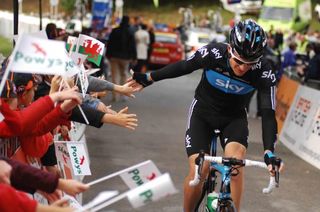
Topics: Maintaining cycling fitness when you can’t be on the bike, Climbing in the seat or out of the saddle?, Pedaling style, Riding with Chronic Fatigue Syndrome, Increasing performance when you can’t increase volume.
Got a question for the fitness panel? Send it to fitness@cyclingnews.com. Try and include as much relevant information as you can think of. Remember, the more details you can provide the better the panel can tailor their response to your question.
Emails may be edited for length or clarity, but we try to publish both questions and answers in their entirety.
To find advice that relates to you more easily:
Maintaining cycling fitness when you can’t be on the bike
Climbing in the seat or out of the saddle?
Get The Leadout Newsletter
The latest race content, interviews, features, reviews and expert buying guides, direct to your inbox!
Riding with Chronic Fatigue Syndrome
Increasing performance when you can’t increase volume
Maintaining cycling fitness when you can’t be on the bike
I was hoping that you guys could help me out with some future training. I know since I have such a unique situation that you may not post this on the website, but I really don't care about that I just want some good advice.
In the next few weeks I will be deployed to Afghanistan and will no longer be able to race or ride my bike. I will be gone for a total of 9 months which will bring me back to the United States in July of 2012. I understand that my season for 2012 will not be able to happen except for a few races in the fall, but I am hoping that I can continue to progress as an athlete and really make great strides during the 2013 season. Some of my goals for the time that I will be in Afghanistan are to cut some weight off (particularly upper-body mass), maintain my cardiovascular and lung capacity, add strength without additional weight, and continue to build my aerobic base.
I have been reading Matt Fitzgerald's book Racing Weight and I am going to start incorporating that into my current diet plan. I will not have control over the quality of the food I eat, but I can control the quantity. So by running a calorie deficit I should be able to cut my weight from 165 down to 155/150; I stand at 5 foot 8 inches. There should be a treadmill at the base that I am living so doing long slow distance mixed with some intervals should help maintain my cardio and lungs. I am not so sure about the strength training that I should be doing.
I started doing some more strength training and I already added 10 pounds to my weight, going from 155 to 165, and I understand that a lot of this is from cutting my riding volume down. Are there particular exercises that I should be doing that will specifically help my cycling and maintain my strength for the sport? How should I go about my strength training since I gain muscle mass so easily?
The good news is that I will get back with enough time to do a few races in the late fall and go right into base training for the 2013 season without worry of being burnt out. The base that I am living at is around 8800 feet in elevation so that will help increase my cardio and lung capacity just by living there. I should also have about an hour in the morning and evening in which I can work out. I appreciate any advice that you guys can offer my way, and hopefully I can come back leaner, stronger, and ready to ride!
Thanks again.
James Hibbard says:
Hello Matt,
In light of what is undoubtedly a unique set of training constraints, I think that the best way to maintain cycling-specific fitness is through not only a fair bit of running on the treadmill, but also through a strength training program that will not add unnecessary upper body mass.
The gym movement that most closely maps onto cycling is the squat. Ideally you should perform free squats (as opposed to doing them on the Smith machine) but other good movements include the leg press, leg curls, dead lifts and the leg extension - however this is a far from exhaustive list, and it is important not to get stale so feel free to mix up your routine. Also make sure to address your core strength through crunches, back extensions and medicine ball work.
Since you sound as if you put on muscle mass easily, and are not racing until the fall of 2012, I would not go through the typical hypertrophy (that is mass-building) phase of strength training. This phase typically consists of eight to twelve repetitions performed at 80-90 per cent of one's single repetition maximum. Instead of a hypertrophy phases, I would stick to lower weights so as to not add any unnecessary mass. However, much like the exercises, some changes in terms of weights and repetitions will be helpful.
One further option to consider is some form of circuit training which would have the added benefit of offering some additional aerobic conditioning.
I hope that this helps.
Best of luck!
Climbing in the seat or out of the saddle?
Hello All,
I really enjoy your section whenever it comes out. Of course I read Cyclingnews every day.
I am a 65-year-old enthusiast who does about 4000km every year and just getting into road cycling with a Specialized Allez bike.
I would really appreciate it if you experts could describe the pros and cons of climbing in the seated vs standing on pedals positions.
Thanks very much and wish you all happy cycling
Cheers,
Sam
Scott Saifer says:
Hi Sam,
There are two times when it makes sense to climb standing for most riders: when they need more power than they can make seated, and when they have run out of gears so that cadence will be below about 70 even in the lowest gear.
For most riders on moderate climbs, seated is more efficient in terms of delaying fatigue while climbing at the same speed, since body weight is not supported on the legs. Thus it makes sense to stand for a quick burst of power to stay with a group or break away near the crest of a climb, but not for a sustained climb. At very low cadences, the ability to drop the body weight on the pedal when standing may allow a rider to keep moving when he's not strong enough to keep the pedals moving while seated.
For very light riders, the loss of efficiency when standing may be small enough to be outweighed by other factors. Thus the tiny climbers may stand where larger riders, even if they are climbers, may need to sit.
Pedaling style
Panel,
I've read quite a few articles on how to determine one's pedal style and I seem to be a 'heels down' type. I recently moved my cleats back a tad to compensate and this feels optimal, but with one weird observation: It feels like that I am pushing my glutes back into the saddle when I come over the top of the stroke almost as if I rely on the rearward bracing of my seat to apply proper force. Is this normal for heels down people or is my saddle position just that far off?
Thanks,
Karsten
Steve Hogg says:
G'day Karsten,
There are 2 issues here. Firstly, the change is recent and you probably haven't modified your motor pattern (muscle firing sequence) to accommodate the change yet. I would advise not changing anything else for a couple of weeks as it takes this long for old motor patterns to be broken down and new ones to become embedded. How long is individually variable but can be hastened by only riding at low to moderate intensity. Anything above approximately 75 per cent of max HR and you will attempt to fall back into patterns of motion that you are used to, but that won't work perfectly because you have altered your cleat position.
Additionally, read the advice given here.
If after a week or two, the issue you describe doesn't feel natural, then the likely culprits for your need to shove back off the top of the stroke are:
-Seat height too low
-Cranks too long
-Seat too far forward
If you run into trouble, let me know and I will attempt to advise further!
Riding with Chronic Fatigue Syndrome
Hi fitness team,
I wrote to you about 18 months ago seeking advice on what I thought was Glandular Fever. I had been tested for GF, which was positive, but it couldn't be proven that it fell within that timeframe. It is possible now that in Sept 09 I contracted GF or a bad virus that kick started my Chronic Fatigue Syndrome - which is what I have now.
I've been recovering now for 2 years and am still affected by this horrible illness. I've sought heaps of advice (I've attached a copy of my Mitochondria test). I'm currently following a diet that starts my day off with proteins (eggs and ham) and then introduces low GI carbs in the day (mostly spinach and peppers ) with more protein in the form of chicken or Mackerel. I have gluten-free pasta or rice with meat in the evening. I also have berry fruits and nuts in the day to supplement my diet. I consume 4500 calories a day but have lost nearly 6kg. I used to weigh 69kg and now weigh 63.5kg.
My current sensations are that the cloudiness has mostly gone, I am able to perform most duties although I still get tired easier than when I was fully fit. Some days I get mentally or physically fatigued - usually when I've overdone things. I am taking 40mg of citalopram a day to help with my sleeping and recovery.
Also, is there any mileage in the mitochondria failure?
I really appreciate your help as I'm desperate to get well again.
Kind regards,
Andrew
James Hibbard says:
Hello Andrew,
Thank you for writing. I am sorry to hear about your Chronic Fatigue Syndrome diagnosis. I have seen cyclists deal with CFS and know that it can be very difficult to deal with.
As you probably know, the very diagnosis for CFS has been contentious as it encompasses such a broad array of symptoms— not only fatigue but also gastrointestinal and digestive problems, mental “fogginess” as well as sleep problems.
Because CFS is so broad, I first really want to urge you to get second (and even third) opinions from medical professionals in order to to eliminate all other possible causes of your CFS.
In 2008 there was study that linked CFS with a retrovirus. This prompted some doctors to prescribe antiviral medicals for the treatment of CFS.
However, just in the last weeks the results of this study have been called into question.
I urge you to follow what the general medical consensus is on the viral link and to keep that in mind as you continue to seek treatment.
In terms of how much cycling you can undertake without setting back your recovery, I would urge you to avoid intense efforts and to heed how you feel. I know that this is rather generic advice but how much training you can recover from is very much predicated upon where you are in your recovery from CFS and is impossible to prescribe training loads in a situation like yours.
I certainly have heard of cases where it is necessary for athletes to take more than a year off in order to fully recover but I have also seen instances where athletes are able to train with some regularity in a matter of months after a CFS diagnosis.
I know that this is not the sort of definitive response that you were probably hoping for and the fact that it is so fuzzy highlights just why CFS is so frustrating to deal with.
Nonetheless, I hope it is somewhat helpful.
Steve Hogg adds:
G'day Andrew,
I've met a number of people like you who have been able to return to full fitness and training. Get hold of a book named "The Big Book of Endurance Racing and Training" by Dr Philip Maffetone. It touches at length on situations such as yours, how to recover from them and return to full fitness and how to train so that it doesn't occur again.
I've seen the 'befores' and the 'afters' and from that small sample, the info contained in the book seems to work well.
In your current condition, your max training HR probably should not rise over 130 bpm, and that may be optimistic. I have seen a number of people in your situation act on the advice in that book and go back to successful high level racing within 18 months because they followed the recommendations religiously. Why that book isn't required reading for every athlete I don't know. I stress, I'm not a coach and James is. However, I see people like you from time to time, recommend that book and invariably get a call at a later date saying that following the the advice contained within it was what enabled them to become healthy and ride strongly again.
Basically general health and neural function are underpinned by a healthy aerobic system. This is why you feel better after training at low intensity; you are rebuilding your aerobic system from a low base of poor health. While you don't perceive training at 140 HR as hard, it is likely noticeably too hard for you at the moment.
Increasing performance when you can’t increase volume
I am a 45 year-old male with a job that requires me to work long hours. Riding more than one day a week is out of the question, and group rides are difficult to arrange, so I ride solo 35-40 Saturdays a year in a variety of weather. My Saturday rides are typically 80-100 miles with around 4,000-6,000 feet of climbing. I try to sprint traffic light to traffic light in the first and last five miles as I work my way out and back into the city. My fitness level has remained consistent over the past two years, with roughly the same average speed and heart rate on each ride. I would like to increase my fitness and ride faster, especially when climbing, but the training resources I have reviewed always begin by recommending more days per week on the bike. Do you have any suggestions given my constraints?
John
Scott Saifer says:
Hi John,
Well, I'm certainly not going to suggest that you go longer on Saturday. What sort of work do you do and do you really have no opportunity to train in any way on the other six days? If you job is very physical, you're probably doing what you can. If not, a short run, spin on the trainer or a few minutes spent climbing stairs in an office building every other day could help improve your bike performance. Any aerobic exercise over 20 minutes is probably worth something. Even a shorter routine of core training and squats done on the floor as you roll out of bed could make a difference. You don't have to ride multiple hours to get a training benefit.
The Cyclingnews Form & Fitness panel
Scott Saifer (www.wenzelcoaching.com) is head coach, CEO of Wenzel Coaching.com and has been coaching cyclists professionally for 18 years. He combines a master's degree in Exercise Physiology with experience in 20 years of touring and racing and over 300 road, track and MTB races to deliver training plans and advice that are both rigorously scientific and compatible with the real world of bike racing.
Scott has helped clients to turn pro as well as to win medals at US Masters National and World Championship events. He has worked with hundreds of beginning riders and racers and particularly enjoys working with the special or challenging rider. Scott is co-author of Bike Racing 101 with Kendra Wenzel and his monthly column appears in ROAD Magazine.
Steve Hogg has owned and operated Pedal Pushers since 1986, a cycle shop specialising in rider positioning and custom bicycles. In that time he has positioned riders from all cycling disciplines and of all levels of ability with every concievable cycling problem. Clients range from recreational riders and riders with disabilities to World and National champions. He can be reached at: www.stevehoggbikefitting.com
Kelby Bethards, MD received a Bachelor of Science in Electrical Engineering from Iowa State University (1994) before obtaining an M.D. from the University of Iowa College of Medicine in 2000. Has been a racing cyclist 'on and off' for 20 years, and when time allows, he races Cat 3 and 35+.
He is a team physician for two local Ft Collins, CO, teams, and currently works Family Practice in multiple settings: rural, urgent care, inpatient and the like.
Pam Hinton has a bachelor's degree in Molecular Biology and a doctoral degree in Nutritional Sciences, both from the University of Wisconsin-Madison.
She did postdoctoral training at Cornell University and is now an associate professor of Nutrition and Exercise Physiology at the University of Missouri-Columbia where she studies the effects of energy balance on bone health. She has published on the effects of cycling and multi-day stage racing on bone density and turnover.
Pam was an All-American in track while at the UW. She started cycling competitively in 2003 and is a three-time Missouri State Road Champion.
James Hibbard progressed from the junior to the professional ranks as a rider and has over 15 years of competitive cycling experience. He is a former Collegiate All-American track cyclist, trained as a resident athlete at the United States Olympic Training Center, earned international medals as part of the U.S. National Team, and was a member of the powerhouse Shaklee and HealthNet Professional road cycling teams.
He has earned 13 National Track Championship medals, as well as numerous junior, U-23 and elite California State championships on both the road and track. Since retiring from full-time racing in 2005, James has focused on his development as a coach.
David Fleckenstein, MPT, OCS (www.physiopt.com) is a physical therapist practicing in Eagle, ID and the president of Physiotherapy, PA, an outpatient orthopedic clinic focusing in orthopedics, spine, and sportsmedicine care.
His clients have included World and US champions, Olympic athletes and numerous professional athletes. He received his Masters degree in Physical Therapy from Emory University and is currently completing his doctorate at Regis University.
He is a board certified orthopedic specialist focusing in manual medicine and specific retraining of spine and joint stabilisation musculature. He is a former Cat I road racer and Expert mountain biker.
Carrie Cheadle, MA (www.carriecheadle.com) is a Sports Psychology consultant who has dedicated her career to helping athletes of all ages and abilities perform to their potential. Carrie specialises in working with cyclists, in disciplines ranging from track racing to mountain biking. She holds a bachelors degree in Psychology from Sonoma State University as well as a masters degree in Sport Psychology from John F. Kennedy University.
Dave Palese (www.davepalese.com) is a USA Cycling licensed coach and masters' class road racer with 16 years' race experience. He coaches racers and riders of all abilities from his home in southern Maine, USA, where he lives with his wife Sheryl, daughter Molly, and two cats, Miranda and Mu-Mu.
Dario Fredrick (www.wholeathlete.com) is an exercise physiologist and head coach for Whole Athlete™. He is a former category 1 & semi-pro MTB racer. Dario holds a masters degree in exercise science and a bachelors in sport psychology.
